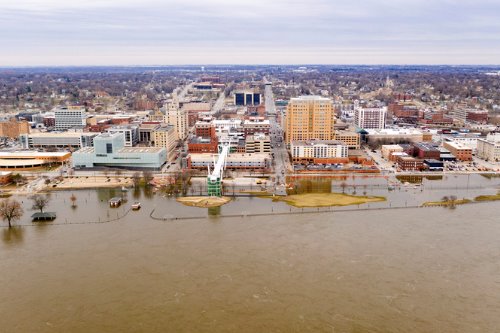

Homes both inside and outside of Special Flood Hazard Areas (SFHA) have billions of dollars in uninsured damage exposure, according to a new report from CoreLogic.
On Thursday, CoreLogic released its Finding Opportunities for Insuring Flood report, which examines opportunities for private insurers to insure homeowners from flood risk both inside and outside National Flood Insurance Program SFHAs. The report examined two areas of the United States with exposure to flood risk - the Atlantic and Gulf Coast regions, which face hurricane-related storm-surge risk - and the Mississippi River basin, which faces inland flooding risk.
Insurers need to understand the tools available to identify flood risk and current reconstruction cost value (RCV) in order to better distribute risk, understand potential underinsurance exposure and ensure policyholders who face flood loss can fully recover, CoreLogic said.
“After Hurricane Harvey devastated the Gulf Coast in 2017, CoreLogic estimated that 70% of the flood damage was uninsured,” said Dr. Howard Botts, executive and chief scientist at CoreLogic. “Since flood is not part of a standards homeowners’ policy, identifying these key areas of flood underinsurance can enable insurers to offer policies that help homeowners recover quickly and keep communities strong and thriving after a disaster.”
CoreLogic also found that uninsured damages from catastrophes can not only be devastating to homeowners and insurance carriers, but can threaten the mortgage industry.
“If a hurricane causes significant storm-surge damage during a time when mortgage delinquencies are already high, this could result in additional issues for lenders and insurers – and ultimately delay economic recovery for impacted communities,” said Dr. Frank Nothaft, chief economist at CoreLogic. “For example, our analysis shows that three months after 2018’s Hurricane Florence made landfall, serious delinquency rates had doubled in major metros affected by the storm.”
CoreLogic’s underinsurance figures are based on an analysis of rising reconstruction costs over a rolling two-year period for homes that are at high to extreme risk of being partially or completely destroyed during a flooding disaster. The estimates are also based on the assumption that a Category 3 to 5 hurricane damages an estimated 30% of at-risk homes’ RCVs, and inland flooding damages 30% of at-risk homes RCVs.
Highlights of the study include:
Storm surge along Atlantic and Gulf Coast
Inland flooding along the Mississippi
“While there are more than five million NFIP policies in force currently, that leaves considerable uninsured flood loss exposure,” CoreLogic said.
